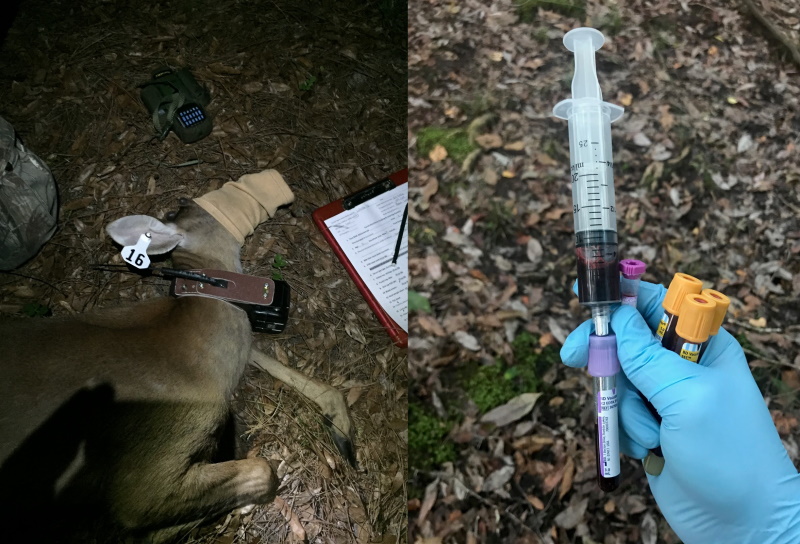
BLACKBURN, DINH, ORANGE, URIBASTERRA – Epizootic Hemorrhagic Disease Virus and Bluetongue Virus Seroprevalence in Wild White-tailed Deer (Odocoileus virginianus) in Florida, USA
Maria G. Uribasterra, Jeremy P. Orange, Emily T. N. Dinh, Clint Peters, Rebecca M. Peters, Olivia Goodfriend, Samantha M. Wisely, and Jason K. Blackburn
Article first published online: 9 MAR 2020 Journal of Wildlife Diseases
DOI: 10.7589/2019-10-263
ABSTRACT: A wild population of white-tailed deer (Odocoileus virginianus) was surveyed for evidence of past or current epizootic hemorrhagic disease virus (EHDV) and current bluetongue virus (BTV) infections. We collected 121 blood samples from hunter-harvested or live-captured deer from two state-managed properties in NW Florida; live captures were in support of a movement ecology study. Blood samples were tested for antibodies against titers to three EHDV serotypes (EHDV-1, EHDV-2, and EHDV-6), and multiplex quantitative reverse transcription PCR was used to identify the presence of EHDV or BTV viral RNA. Of these samples, 81% (98/121) tested seropositive for at least one of three serotypes of EHDV. Of those testing seropositive, 33% (40/121) contained antibodies for two serotypes, and 19% (24/121) contained antibodies for all three EHDV serotypes. Furthermore, results of generalized linear models indicated that the probability of infection by EHDV serotypes 1 and 6 increased with an animal’s age. Our findings indicate that seroprevalence may be high for multiple serotypes in regions where these orbiviruses are endemic. These results could prove useful for managing disease risk in naïve deer populations.
Read the full publication at Journal of Wildlife Diseases.